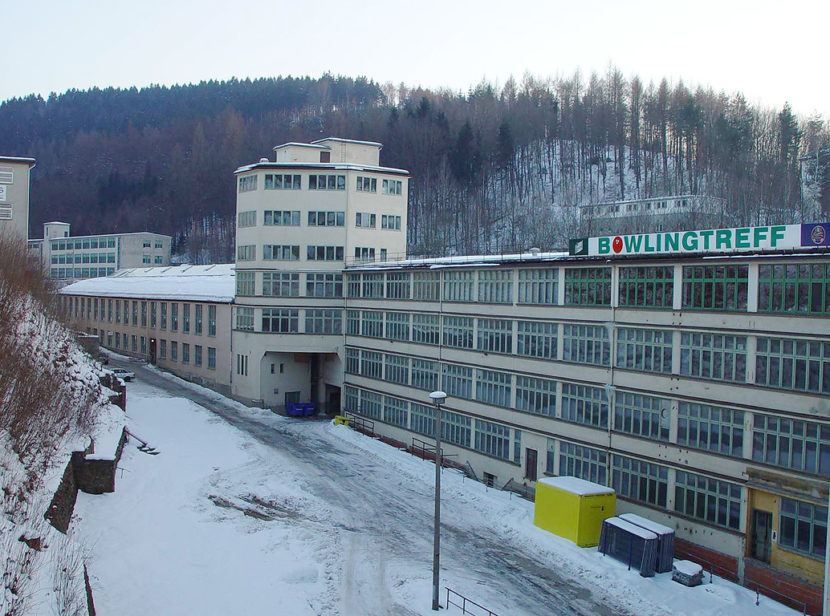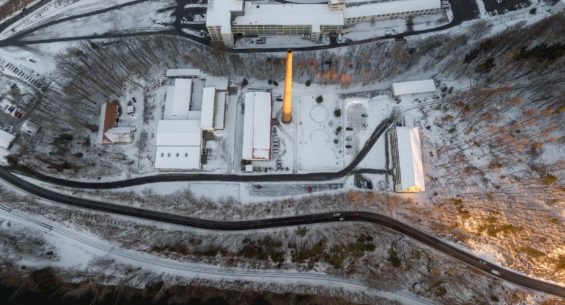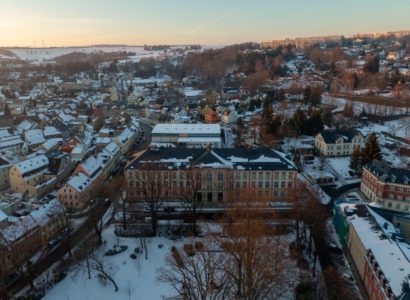Zschopau Subcamp
November 21, 1944 – mid-April 1945
![]()
Former DKW-Werk Zschopau, 2005 (Photo: Flossenbürg Concentration Camp Memorial). MZ motorbikes were produced here after the war. Meanwhile most of the factory halls are vacant.
![]()
Aerial view of the former factory grounds in Zschopau, 2019 (Flossenbürg Concentration Camp Memorial / Photo: Rainer Viertlböck)
![]()
The former Zschopau secondary school, where the women were initially quartered, 2019 (Flossenbürg Concentration Camp Memorial / Photo: Rainer Viertlböck)
-
Prisoners
500 Jewish women, of whom almost 300 were from Hungary, 137 from Poland, 22 from France, eleven from Slovakia, eight each from Italy and Greece. The others came from five other countries.
-
Forced labor and quarters
Production of parts for aircraft and vehicle construction at the DKW (division of Auto-Union). At first, the women were quartered in the Zschopau secondary school, then on the unfurnished first floor of a factory building in the DKW works complex.
-
Guards
Detail leader Happel, 12 SS guards, along with 19, later 21, female overseers
-
Death toll
Five instances of death are documented. A women gave birth in Zschopau. The baby was killed, the woman survived.
-
Disbanding of the camp / end of the war
On April 13, 1945, the women from the subcamps Willischthal and Zschopau were sent in cattle wagons on a week long odyssey to Theresienstadt. They remained in Theresienstadt until the liberation by the Soviet troops in the beginning of May.
-
Commemoration
On May 8, 2005, on the occasion of the sixtieth anniversary of the end of the war, a memorial stone for the victims of the Zschopau and Wilischthal subcamps was unveiled in the Zschopau Cemetery. On the memorial stone, the names of the women who died in these subcamps are engraved.


